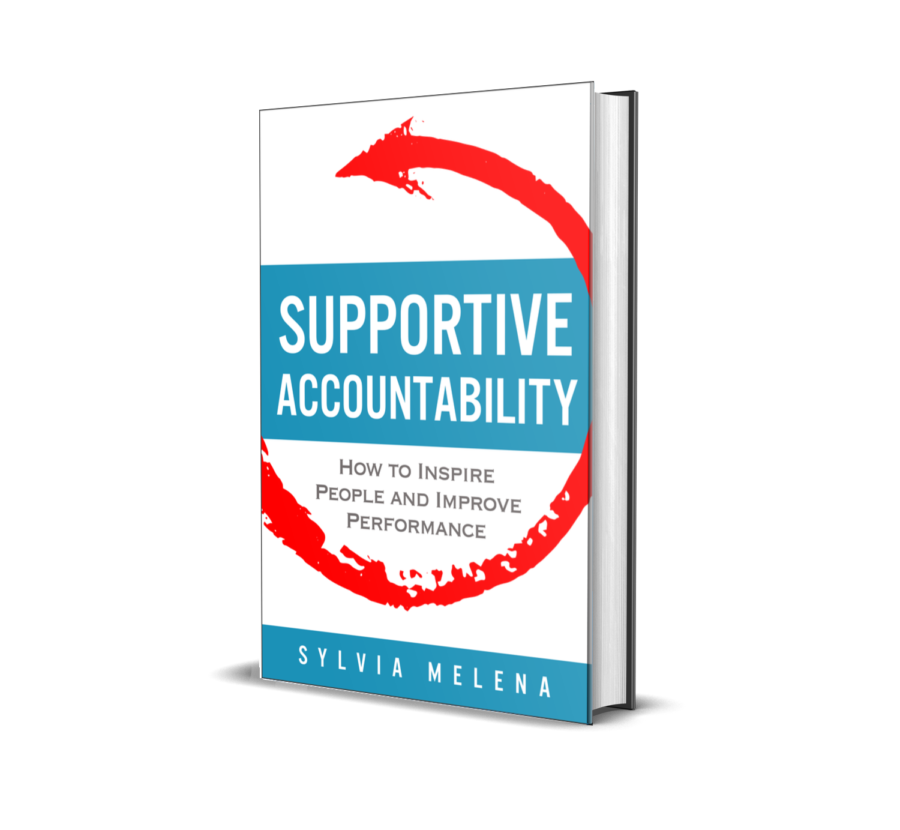Let’s get real.
Employee performance management isn’t always easy.
And when employees are underperforming, it can be time-consuming and draining.
But did you know that you can lighten the burden with a strong performance management process? And what’s more, the process doesn’t have to be complicated.
Most Leaders Get Performance Management Wrong
Yet, as simple as managing employee performance can be, the management research shows that most leaders get it wrong.
ONLY about
30%
“of employees in the U.S., U.K., Spain, France, and Germany strongly agree that their performance is managed in a way that motivates them to do outstanding work.”
Source: Gallup – https://www.gallup.com/workplace/245786/gallup-reports-share-leaders-2019.aspx
But don’t worry. You don’t have to be among the leaders that struggle. You can succeed in employee performance management.
What is a Strong Performance Management Process?
An effective performance management process doesn’t operate in a vacuum. It’s aligned to a strategic and overarching performance management system within the organization.
It’s rooted in time-tested, research-based human behavior principles.
It focuses on the well-being of people and delivers results.
This type of performance management employs a balanced approach of supportiveness and accountability, and this balance is the core principle of the Supportive Accountability Leadership™ Model.
The Seven Elements of Effective Performance Management
The Supportive Accountability Leadership Model includes a comprehensive performance management process consisting of seven integrative elements that engage employees, promote accountability, and boost performance.
These are known as the Seven Elements of Effective Performance Management.
The seven elements are:
- Expectations,
- Monitoring,
- Feedback,
- Support,
- Recognition,
- Accountability, and
- Documentation.
These elements are not necessarily sequential and are all interconnected. The best leaders are agile and apply the elements required in each situation.
Do You Dread Performance Review Time?
Get your FREE Performance Review Mini-Guide!
A Word of Warning
Before you apply any performance management process, it’s crucial to seek appropriate guidance.
Performance management can easily land you and your organization in hot water if not handled according to governing policies, regulations, and laws.
Before applying any performance management process, seek guidance from your direct manager, human resources, legal counsel, or other appropriate experts in your organization. They can guide you on your organization’s human resources protocols.
How to Apply the Seven Elements
Here are some tips on how you can apply the seven elements in your performance management process.
1. Use Expectations to Inspire
Expectations that inspire are more than quantifiable goals. They let employees know their work is part of something greater and makes a difference. They clarify the expected results and how achievement will be measured.
Without a clear understanding of what is expected of them, employees will be aiming in the dark, not knowing where they’re headed or the ultimate purpose of their work.
2. When You Monitor, Focus on What Matters
Monitoring – measuring, observing, and reviewing work – points people to the work that really matters. With so many competing priorities, monitoring helps employees focus their energies on what you monitor.
When you measure, observe, and review specific performance and customer service indicators, you’re signaling to your team that they’re a priority. Employees will read these signals and focus on delivering that which you monitor.
3. Apply Best Practices in Performance Feedback
Effective feedback involves frequent, two-way collaborative communication. It lets employees know whether they’re meeting expectations. It also helps you identify support needs, provide recognition, and promote accountability.
Provide continuous positive feedback to employees when they’re doing well in their regular job duties, not just when they’re going above and beyond expectations.
Also, let people know when they need to take their performance to higher levels. Performance improvement conversations can be a good thing. It’s all in how you approach them.
4. Provide the Critical Support Factors that Unleash Performance
It’s not enough to provide clear expectations, monitor performance, and provide feedback. To perform at their best, employees need support.
Support is anything employees reasonably need to be successful. It can involve tools, equipment, supplies, training, and access to information. Sometimes support means helping people through difficult circumstances, such as addictions, homelessness, mental health, and other concerns.
You can’t rely on employees telling you when they need assistance. To uncover their true support needs, establish a strong supervisor-employee relationship, continuously focus your team on meeting performance expectations, and ask them what they need to succeed.
5. Tap into the Power of Employee Recognition
In the Supportive Accountability Leadership Model, the definition of employee recognition is “showing employees they’re appreciated and shining a light on great performance.”
This simple definition goes much deeper than formalized employee recognition programs. It creates a culture of gratitude that encourages everyone, regardless of title or role, to appreciate and recognize others.
The appreciation you show your direct and indirect reports will go a long way in engaging them and encouraging performance excellence.
6. Promote Supportive Accountability
Many leaders struggle with the word accountability. They feel it’s harsh. But nothing could be farther from the truth.
When you approach accountability in the spirit of supportiveness, it’s called supportive accountability, and it’s the caring thing to do.
Think of this way.
We’re all stewards of the areas within our span of control. So, accountability is simply rendering an account of that which we’re entrusted to manage, whether it’s a unit, office, division, region, or an entire enterprise.
Having supportive performance conversations with your direct reports regarding their stewardship allows you to cheer for them when they’re succeeding and provide support when they’re not on track.
Neglecting to lead with support and accountability leads to an imbalanced and ineffective leadership style that undermines performance.
7. Document Skillfully
Documenting performance is not just a “nice-to-do.” It’s critical for fair, accurate, and complete performance evaluations.
Documentation can also support recognition and discipline.
If your actions are not documented, it’s as if they didn’t occur, and you’re back at square one. And if things go awry, this can have some unexpected ramifications for you and the organization. It can be a career killer.
While documentation can support discipline, this isn’t the primary goal. Discipline should be your last resort in employee performance management, not your default. Documentation applied in the spirit of supportive accountability promotes a balanced approach to help the employee succeed.
A Strong Supervisor-Employee Relationship
None of these seven elements matter without the most crucial factor for unleashing performance excellence—a strong supervisor-employee relationship. This relationship is the foundation of Supportive Accountability Leadership.
As a direct supervisor, regardless of your title or role, you alone can make or break the workplace in the eyes of employees.
That’s why the core of the model is supportive accountability, a blend of supportive leadership and strong accountability that sparks employee performance. This is the key to achieving success.
Consistently following an effective performance management process will help you engage employees, promote accountability, and boost performance. The more you do it, the more it becomes a habit and requires less effort. Employees will also feel that your performance management motivates them to give their best at work.
SYLVIA MELENA
Sylvia Melena is the Founder and CEO of Melena Consulting Group, a leadership and management consulting and training company in sunny California. She is also the architect of the Supportive Accountability Leadership Model™ and the international award-winning author of Supportive Accountability: How to Inspire People and Improve Performance.
Partial excerpts taken from: Melena, Sylvia.Supportive Accountability How to Inspire Peopleand Improve Performance. La Mesa, CA: Melena Consulting Group, 2018, pp. 10, 29, 43, 59, 81, 113, 133, 134, 175. Partial excerpts reprinted with permission. Melena, Sylvia. “The 7 Elements that Engage Employees and Boost Performance,” Melena Consulting Group, 9/3/2019, YouTube Video, 03:18, https://youtu.be/wYAfN7GakA8. Excerpts printed with permission.














